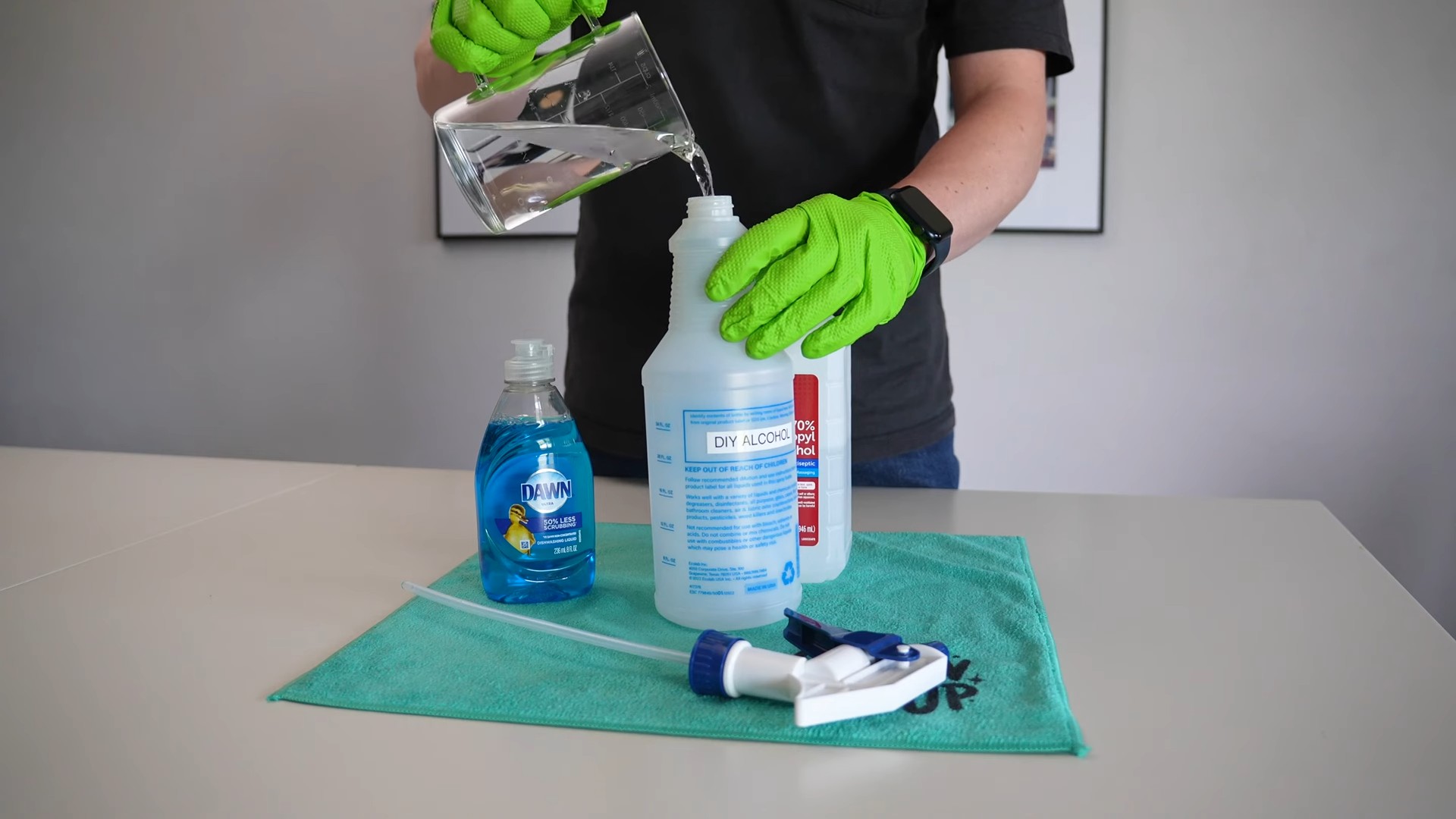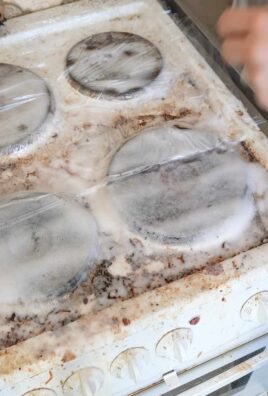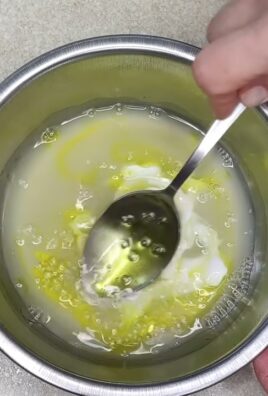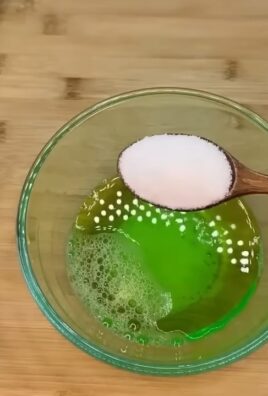Natural cleaning recipes are more than just a trend; they’re a return to simpler, healthier, and often more effective ways to keep our homes sparkling! Have you ever stopped to think about what’s *really* in those brightly colored bottles under your sink? I know I used to just grab whatever smelled the strongest, but then I started wondering about the long-term effects on my family and the environment.
For centuries, cultures around the globe have relied on the power of natural ingredients like vinegar, baking soda, and essential oils for cleaning. Think about it – our grandmothers didn’t have access to the chemical concoctions we do today, and their homes were often impeccably clean! This knowledge, passed down through generations, highlights the enduring effectiveness of these time-tested methods.
That’s why I’m so excited to share these DIY natural cleaning recipes with you. Not only will you be ditching harsh chemicals, but you’ll also be saving a significant amount of money. Store-bought cleaners can be surprisingly expensive, and the cost adds up quickly. Plus, you’ll gain the satisfaction of knowing exactly what’s going into your cleaning solutions. Ready to create a healthier home and a happier wallet? Let’s dive in!

DIY Natural Cleaning Recipes to Save You Money (and the Planet!)
Hey everyone! I’m so excited to share some of my favorite DIY natural cleaning recipes with you. Not only are these recipes incredibly effective at tackling grime and dirt, but they’re also much cheaper than store-bought cleaners and way better for the environment (and your health!). Plus, you probably already have most of the ingredients in your pantry! Let’s get started!
General Supplies You’ll Need
Before we dive into specific recipes, let’s gather some essential supplies. Having these on hand will make the whole process much smoother.
* Spray Bottles: I recommend having a few different sizes. Clear bottles are great so you can easily see what’s inside. Label them clearly!
* Microfiber Cloths: These are fantastic for cleaning because they trap dirt and dust effectively without scratching surfaces.
* Glass Jars: Perfect for storing homemade cleaning pastes and powders.
* Measuring Cups and Spoons: Accuracy is key for some recipes, so have these ready.
* Essential Oils (Optional): These add a lovely scent and some have antibacterial properties. Lavender, tea tree, lemon, and eucalyptus are my favorites.
* Funnel: Makes transferring liquids into spray bottles much easier.
* Gloves: Protect your hands, especially when working with stronger ingredients like vinegar.
All-Purpose Cleaner
This is my go-to cleaner for almost everything! It’s safe for most surfaces, but always test in an inconspicuous area first, just to be safe.
Ingredients:
* 1 part White Vinegar
* 1 part Water
* 10-20 drops Essential Oil (optional, for scent)
Instructions:
1. Combine Ingredients: In a spray bottle, mix equal parts white vinegar and water. I usually start with 1 cup of each.
2. Add Essential Oils (Optional): If you’re using essential oils, add 10-20 drops to the mixture. I love using lemon or lavender for a fresh, clean scent.
3. Shake Well: Secure the spray nozzle and shake the bottle well to combine all the ingredients.
4. Use: Spray the cleaner onto the surface you want to clean and wipe with a microfiber cloth. For tougher stains, let the cleaner sit for a few minutes before wiping.
Glass Cleaner
Say goodbye to streaks with this simple glass cleaner!
Ingredients:
* 1/4 cup White Vinegar
* 2 cups Water
* 1/2 teaspoon Liquid Dish Soap (optional, but helps cut through grease)
Instructions:
1. Combine Ingredients: In a spray bottle, combine the white vinegar, water, and dish soap (if using).
2. Shake Gently: Gently shake the bottle to mix the ingredients. Avoid creating too many bubbles.
3. Spray and Wipe: Spray the cleaner onto your windows or mirrors and wipe with a clean microfiber cloth or newspaper for a streak-free shine.
Toilet Bowl Cleaner
This fizzing toilet bowl cleaner is surprisingly effective and uses just two simple ingredients!
Ingredients:
* 1 cup Baking Soda
* 1/2 cup White Vinegar
Instructions:
1. Pour Baking Soda: Pour the baking soda into the toilet bowl.
2. Add Vinegar: Slowly pour the white vinegar over the baking soda. It will fizz!
3. Let it Fizz: Let the mixture fizz for about 10-15 minutes.
4. Scrub and Flush: Scrub the toilet bowl with a toilet brush and then flush.
Oven Cleaner
Cleaning the oven is never fun, but this natural oven cleaner makes it a little less dreadful.
Ingredients:
* 1/2 cup Baking Soda
* Water (enough to make a paste)
* White Vinegar (in a spray bottle)
Instructions:
1. Make a Paste: In a bowl, mix the baking soda with enough water to form a thick paste.
2. Apply the Paste: Spread the baking soda paste all over the inside of your oven, avoiding the heating elements.
3. Let it Sit: Let the paste sit for at least 12 hours, or even overnight.
4. Spray with Vinegar: The next day, spray the baking soda paste with white vinegar. It will fizz.
5. Wipe Clean: Wipe away the paste with a damp cloth. You may need to scrub a bit for stubborn areas.
6. Rinse: Rinse the oven with clean water to remove any remaining residue.
Drain Cleaner
Unclog those drains naturally! This is a great alternative to harsh chemical drain cleaners.
Ingredients:
* 1/2 cup Baking Soda
* 1 cup White Vinegar
* Boiling Water
Instructions:
1. Pour Baking Soda: Pour the baking soda down the drain.
2. Add Vinegar: Pour the white vinegar down the drain after the baking soda.
3. Let it Fizz: Let the mixture fizz for about 30 minutes.
4. Flush with Boiling Water: Carefully pour a pot of boiling water down the drain to flush away the clog.
5. Repeat if Necessary: If the drain is still clogged, repeat the process.
Furniture Polish
Give your wooden furniture a natural shine with this simple polish.
Ingredients:
* 1/4 cup Olive Oil
* 1/4 cup White Vinegar or Lemon Juice
* A few drops of Essential Oil (optional, for scent)
Instructions:
1. Combine Ingredients: In a small bowl, combine the olive oil, white vinegar (or lemon juice), and essential oil (if using).
2. Apply to Furniture: Dip a clean, soft cloth into the mixture and apply a thin layer to your wooden furniture.
3. Buff: Use a clean, dry cloth to buff the furniture until it shines.
Laundry Detergent
Making your own laundry detergent is surprisingly easy and can save you a lot of money!
Ingredients:
* 1 cup Washing Soda
* 1 cup Borax
* 1 bar of Soap (like Fels-Naptha or Zote), grated
Instructions:
1. Grate the Soap: Grate the bar of soap using a cheese grater.
2. Combine Ingredients: In a large bowl, combine the washing soda, borax, and grated soap.
3. Mix Well: Mix all the ingredients thoroughly.
4. Store: Store the laundry detergent in an airtight container.
5. Use: Use 1-2 tablespoons of detergent per load of laundry.
Dish Soap
This homemade dish soap is gentle on your hands and effective at cleaning dishes.
Ingredients:
* 1 cup Hot Water
* 1/4 cup Liquid Castile Soap (like Dr. Bronner’s)
* 1 tablespoon White Vinegar
* 10-15 drops Essential Oil (optional, for scent)
Instructions:
1. Combine Ingredients: In a bowl, combine the hot water, liquid castile soap, white vinegar, and essential oil (if using).
2. Mix Gently: Gently stir the ingredients together to avoid creating too many bubbles.
3. Pour into Dispenser: Pour the dish soap into a soap dispenser.
4. Use: Use as you would regular dish soap.
Floor Cleaner
Keep your floors sparkling clean with this natural floor cleaner. Remember to always test in an inconspicuous area first, especially on delicate surfaces like hardwood.
Ingredients:
* 1 gallon Warm Water
* 1/4 cup White Vinegar
* A few drops of Essential Oil (optional, for scent)
Instructions:
1. Combine Ingredients: In a bucket, combine the warm water, white vinegar, and essential oil (if using).
2. Mop the Floor: Dip a mop into the solution and wring out the excess water. Mop the floor as usual.
3. Let it Dry: Allow the floor to air dry.
Bonus Tip: Infused Vinegar
Want to add extra cleaning power and a lovely scent to your vinegar-based cleaners? Try infusing your vinegar!
How to Infuse Vinegar:
1. Choose Your Infusion: Citrus peels (lemon, orange, grapefruit) and herbs (lavender, rosemary, thyme) work great.
2. Fill a Jar: Fill a glass jar with your chosen infusion ingredients.
3. Pour Vinegar: Pour white vinegar over the ingredients, making sure they are completely submerged.
4. Seal and Steep: Seal the jar and let it steep for 2-4 weeks in a cool, dark place.
5. Strain: Strain the vinegar through a

Conclusion
So, there you have it! Ditching those expensive, chemical-laden cleaners and embracing these natural cleaning recipes is more than just a trend; it’s a smart choice for your health, your wallet, and the planet. We’ve explored how simple ingredients like vinegar, baking soda, and essential oils can be transformed into powerful cleaning agents, tackling everything from grimy countertops to stubborn stains.
But why is this DIY approach a must-try? First and foremost, it puts you in control. You know exactly what’s going into your cleaning solutions, eliminating the worry of hidden toxins and harsh chemicals that can irritate your skin and respiratory system. This is especially crucial for households with children, pets, or individuals with sensitivities.
Secondly, let’s talk about the savings. The cost of commercially produced cleaners can quickly add up, especially if you’re buying specialized products for every surface and task. By making your own cleaners with inexpensive ingredients, you can significantly reduce your household expenses and free up your budget for other things. Think of all the extra lattes you could buy!
Beyond the health and financial benefits, these natural cleaning recipes are also incredibly versatile. Feel free to experiment with different essential oil combinations to create your own signature scents. Love the smell of lavender? Add a few drops to your all-purpose cleaner for a calming and refreshing aroma. Prefer something more invigorating? Try lemon or eucalyptus. You can also adjust the ratios of ingredients to suit your specific cleaning needs. For example, if you’re dealing with particularly stubborn grease, you might want to increase the amount of vinegar in your degreaser.
And speaking of variations, consider infusing your vinegar with citrus peels for an extra boost of cleaning power and a delightful fragrance. Simply place citrus peels (lemon, orange, grapefruit, etc.) in a jar, cover them with white vinegar, and let them steep for a few weeks. Strain the vinegar and use it as usual. This infused vinegar is particularly effective for cleaning hard water stains and soap scum.
Another great variation is to add a small amount of castile soap to your all-purpose cleaner for extra cleaning power. Castile soap is a gentle, plant-based soap that’s effective at removing dirt and grime without being harsh on surfaces. Just be sure to use it sparingly, as too much soap can leave a residue.
Ultimately, the best way to discover the magic of these natural cleaning recipes is to try them for yourself. Start with a simple all-purpose cleaner and see how it performs in your home. Don’t be afraid to experiment and adjust the recipes to your liking. We’re confident that you’ll be amazed by the results.
We encourage you to embrace these natural cleaning recipes and experience the difference for yourself. Once you’ve tried them, we’d love to hear about your experience! Share your favorite recipes, tips, and tricks in the comments below. Let’s create a community of eco-conscious cleaners who are passionate about creating healthy and sustainable homes. What are you waiting for? Get cleaning!
Frequently Asked Questions (FAQ)
Q: Are these natural cleaning recipes really as effective as commercial cleaners?
A: This is a common question, and the answer is a resounding yes, in many cases! While some heavy-duty cleaning tasks might require a bit more elbow grease with natural cleaners, they are generally just as effective, and often safer, for everyday cleaning. The key is to understand the properties of the ingredients you’re using. For example, vinegar is a powerful disinfectant and degreaser, while baking soda is a mild abrasive that can scrub away grime. Essential oils, in addition to their fragrance, can also have antibacterial and antifungal properties. For particularly tough stains or messes, you may need to let the cleaner sit for a longer period of time or use a bit more scrubbing power. However, for routine cleaning, these natural recipes are more than capable of getting the job done.
Q: What types of surfaces can I safely clean with these recipes?
A: Most of the recipes we’ve discussed are safe for a wide variety of surfaces, including countertops, sinks, toilets, floors, and appliances. However, there are a few exceptions to keep in mind. Avoid using vinegar on natural stone surfaces like marble or granite, as it can etch and damage the stone. Similarly, avoid using abrasive cleaners like baking soda on delicate surfaces like polished wood or painted walls, as they can scratch the finish. Always test a small, inconspicuous area before cleaning the entire surface, especially if you’re unsure about the material. For wood floors, use a very diluted vinegar solution or a cleaner specifically designed for wood.
Q: How long will these homemade cleaners last?
A: The shelf life of your homemade cleaners will depend on the ingredients you use. Cleaners made with water should be used within a few weeks, as they can be susceptible to bacterial growth. Cleaners made with vinegar or alcohol will last much longer, typically several months. To extend the shelf life of your cleaners, store them in a cool, dark place and use clean spray bottles. You can also add a few drops of grapefruit seed extract, which is a natural preservative. If you notice any changes in color, odor, or consistency, it’s best to discard the cleaner and make a fresh batch.
Q: Can I use any essential oils in these recipes?
A: While you can technically use any essential oil that you enjoy the scent of, some essential oils are more effective for cleaning than others. Lemon, tea tree, eucalyptus, lavender, and peppermint are all popular choices for their antibacterial, antifungal, and antiviral properties. When choosing essential oils, be sure to purchase high-quality, pure essential oils from a reputable source. Avoid using fragrance oils, as they don’t have the same therapeutic benefits. Also, be mindful of the concentration of essential oils you’re using. A few drops are usually sufficient for a spray bottle of cleaner.
Q: Are these natural cleaning recipes safe for pets and children?
A: In general, these natural cleaning recipes are much safer for pets and children than commercial cleaners, which often contain harsh chemicals that can be harmful if ingested or inhaled. However, it’s still important to take precautions. Keep all cleaning supplies out of reach of children and pets. Avoid using essential oils around pets, as some essential oils can be toxic to animals. If you’re concerned about allergies or sensitivities, test a small area before cleaning the entire surface. And as always, supervise children when they’re helping with cleaning tasks.
Q: Where can I find the ingredients for these recipes?
A: The ingredients for these natural cleaning recipes are readily available at most grocery stores and online retailers. White vinegar, baking soda, and castile soap can be found in the cleaning aisle. Essential oils can be found in the health and beauty section or online. You may also be able to find some of these ingredients in bulk at natural food stores or co-ops, which can save you money in the long run.
Q: Can I use these recipes to save money?
A: Absolutely! One of the biggest benefits of making your own cleaning products is the cost savings. The ingredients used in these recipes are typically much cheaper than commercially produced cleaners. By switching to natural cleaning recipes, you can significantly reduce your household expenses and free up your budget for other things. Plus, you’ll be reducing your consumption of plastic bottles and packaging, which is good for the environment and your wallet.




Leave a Comment